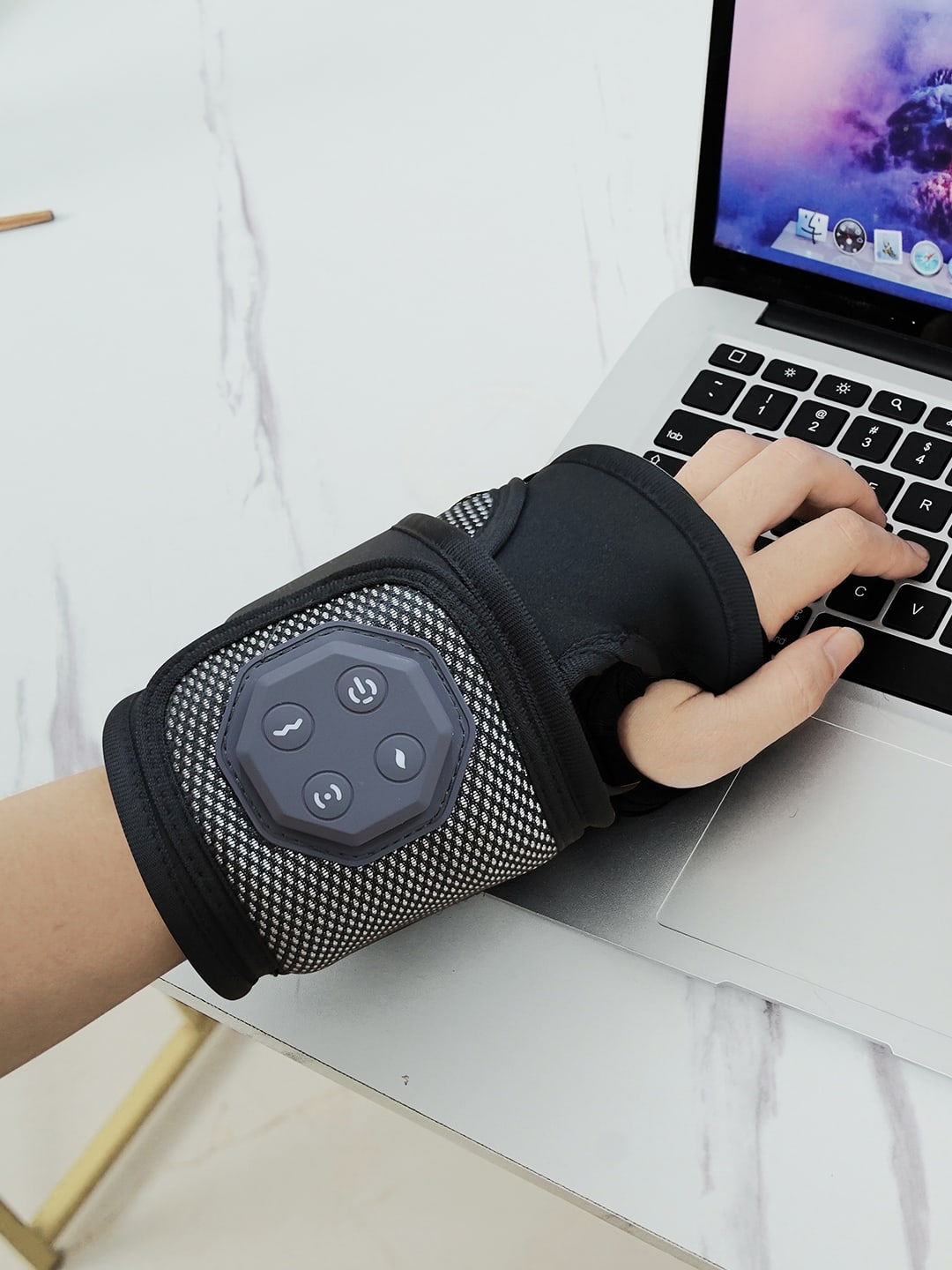Handheld Massager for Pain? A Therapist's Guide
- By Grace
- Updated on
For massage therapists and fitness enthusiasts, hands and forearms are vital, but constant use can lead to nagging pain and fatigue. The debate over whether traditional stretching or a modern tool like a handheld massager is more effective for recovery is common. The truth is, it's not an either/or situation. This article will explain what happens inside your forearms and demonstrate how a smart, integrated approach—where a handheld massager plays a key role—is the path to a long and pain-free career.What's Actually Happening Inside Your Hands and Forearms?
What's Actually Happening Inside Your Hands and Forearms?
Think of your forearm muscles like the engine for your hands and fingers. Every knead, press, and grip you perform is powered by this complex group of muscles. For fitness enthusiasts, every pull-up or deadlift relies on them. This repetitive demand, day in and day out, leads to what's known as repetitive strain. It's not a single dramatic injury, but a slow accumulation of micro-trauma in the muscle fibers and tendons. This is the root cause of that familiar deep ache, burning sensation, or weakness that makes using a handheld massager so appealing.
This strain often leads to common and frustrating conditions. You might start to feel a sharp pain on the outside of your elbow, a classic sign of lateral epicondylitis, or what most people call "tennis elbow." To be honest, it's a condition I see frequently in my practice, and it often responds well to a combination of rest and targeted therapy with a handheld massager. This isn't just about pain; it's about developing muscle imbalances and adhesions (knots) that restrict movement, reduce your strength, and ultimately, put your career or training at risk. Ignoring these early signs is a recipe for chronic issues down the road.

The Science Behind a Complete Hand Care Strategy
A truly effective hand and forearm care plan isn’t about finding one magic bullet. It’s about building a system where every part supports the others. Based on what I've seen work for countless professionals in cities like Toronto and Calgary, the most successful approach rests on three core pillars that work together: active recovery, targeted tool-based therapy featuring a handheld massager, and strategic rest. Each one addresses a different piece of the recovery puzzle.
Let's break them down:
- Active Recovery: This is your daily maintenance. Regular stretching, yoga, and even foam rolling for the forearms help maintain flexibility and blood flow. This prevents the muscles from becoming chronically shortened and tight. It's the foundational "pre-hab" work that prepares the tissue for deeper work with a tool like a handheld massager.
- Targeted Tool-Based Therapy: This is where you get specific. While stretching is great for general maintenance, tools allow you to apply focused pressure to break up adhesions and trigger points that manual stretching can't reach. A quality handheld massager, for instance, can deliver percussion, air pressure, or heat directly to overworked muscles, accelerating recovery significantly. This pillar also includes supportive gear like an elbow compression sleeve to manage inflammation or a sprained wrist support for acute issues.
- Strategic Rest: This is the most underrated pillar. Rest isn't about doing nothing; it's when your body does its most important repair work. Without adequate time away from intense demands, your muscles never fully heal. This is really, really crucial. True recovery happens when you give your body the downtime it needs to rebuild after a tough week and dedicated sessions with your handheld massager.
The Real-World Benefits of a Holistic Approach
When you combine these three pillars, you're not just chasing pain relief; you're investing in your longevity. Committing to a full-spectrum care routine, with a handheld massager as a central tool, delivers tangible benefits that you'll feel both at work and in your daily life. It’s about shifting from a reactive mindset (fixing pain when it happens) to a proactive one (preventing it from starting).
Here’s what you can realistically expect when you get it right:
- Significant Pain Reduction: By addressing both general tightness with stretching and specific knots with tools like a handheld massager, you directly tackle the sources of pain. This is especially true when performing a targeted massage for tennis elbow, a task for which a handheld massager is perfectly suited.
- Increased Career & Training Longevity: This is the big one. Proactive care is the single best thing you can do to avoid burnout. A good routine, including a handheld massager, is an investment in your future.
- Improved Performance and Grip Strength: Healthy, pliable muscles are strong muscles. By improving blood flow and releasing restrictions with your handheld massager, you’ll notice an improvement in your endurance and the power you can deliver through your hands.
- Faster Recovery Between Sessions: Using a handheld massager with heat and vibration functions, such as the KLCOSY models popular in some Canadian clinics, can dramatically speed up the flushing of metabolic waste, helping you feel fresher, faster.
Best Practices: Building Your Daily & Weekly Hand Care Routine
The key to achieving results is consistency and intentionality. Your handheld massager should be a regular part of your recovery toolkit, not an afterthought. You can adopt a simple framework: spend 5-10 minutes daily on gentle wrist and forearm stretches. A few times a week, dedicate 15 minutes to a deep recovery session with your handheld massager, focusing on tender spots and avoiding direct pressure on bones. For flare-ups, consider wearing an elbow compression sleeve and using your massager more frequently. This is also a good time for a targeted massage for tennis elbow.

Frequently Asked Questions
Do hand massagers really work for pain relief?
Yes, for many people they do. A good handheld massager, especially models with functions like air pressure, heat, and vibration, can be very effective for pain relief. They work by increasing blood circulation to the muscles and tendons, which helps to reduce inflammation and flush out metabolic byproducts that cause soreness. The compression can also help to release tight muscles and trigger points, providing relief from the chronic ache associated with overuse.
How often should I use a hand massager for best results?
For best results, consistency is key. For general maintenance and prevention, using a handheld massager for 10-15 minutes, 3 to 4 times a week, is a great starting point. If you are experiencing acute pain or are in a period of intense work, you might benefit from daily use. It's important to listen to your body; if you feel any sharp pain or discomfort, reduce the frequency or intensity of your handheld massager sessions.
How much do hand massagers cost in Canada?
The cost of a handheld massager in Canada can vary widely based on brand, features, and quality. You can find basic models for as little as $50-$80. Mid-range models with heat, varied pressure settings, and vibration often fall in the $100 to $200 range. A premium handheld massager from a well-known brand can cost over $200. It's worth checking online retailers and clinic suppliers in cities like Toronto and Calgary for competitive pricing and reviews for the best handheld massager.





